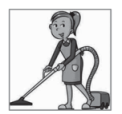On a Sunday morning in 2008. Vic Gundotra received a call during a religious(宗教的)service. It was from Steve Jobs, Apple's former CEO. He didn't answer, but Jobs left a message saying he had something important to discuss. Gundotra returned his call almost immediately.
"Hey Steve, this is Vic, " he said. "I'm sorry I didn't answer your call earlier I was in religious services, and the caller ID said 'unknown', so I didn't pick up. "
Steve laughed, saying, "Vic, unless the caller ID said 'God', you should never pick up during services. " Vic Gundotra laughed nervously. Although Steve used to call him during the week when he was upset about something, it was unusual for him to call on Sunday and ask him to call his home. He was worried what had happened.
"Vic, we have an urgent(急迫的)problem. I've already asked someone from my team to help you and I hope you can fix this tomorrow, "said Steve. " I've been looking at the Google logo on the iPhone and I'm not happy with the icon(图标). The second O in Google doesn't have the proper yellow color. It's just wrong and I'm going to have Greg fix it tomorrow. Is that OK with you?"
The CEO of Apple, who revolutionized(革新)personal computers, the way we listen to music and the way we think of mobile devices, was worried about the yellow in the second "O" in Google!
Needless to say the problem was fixed, and Vic Gundotra says it taught him a lesson on leadership and attention to detail. "It was a lesson I'll never forget, " said Gundotra. "CEOs should care about details. Even shades of yellow. On a Sunday. "



